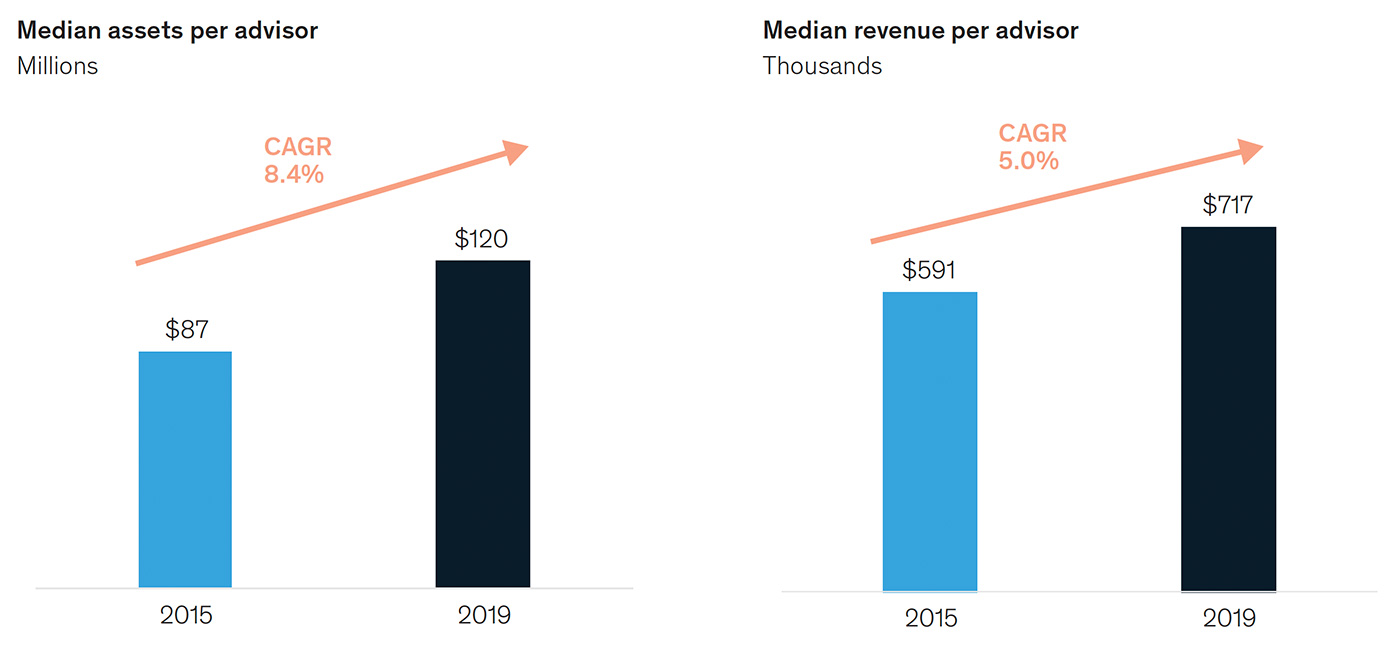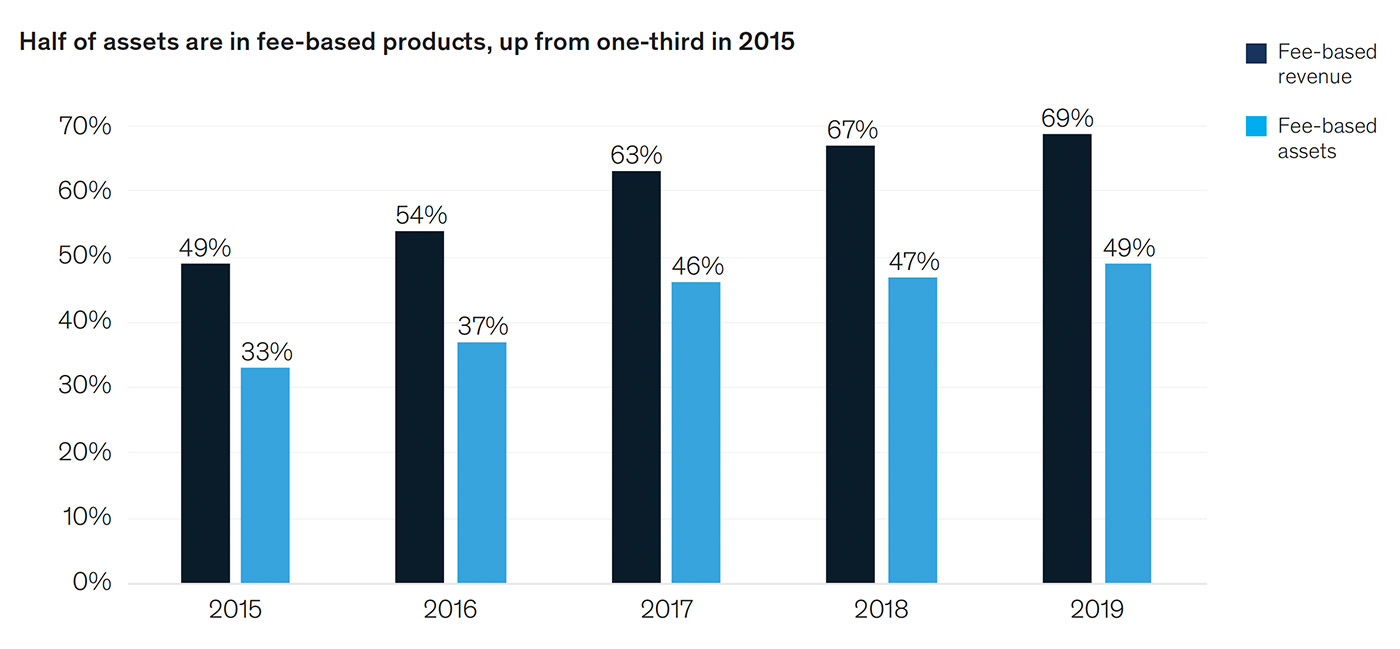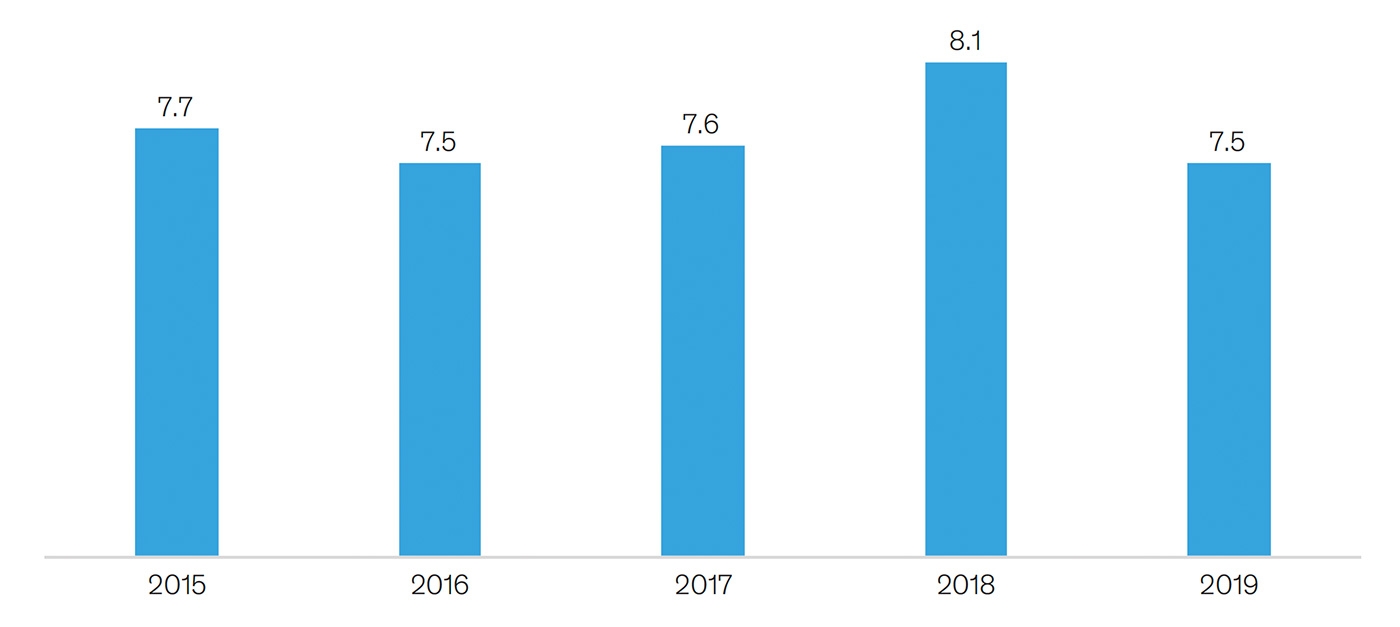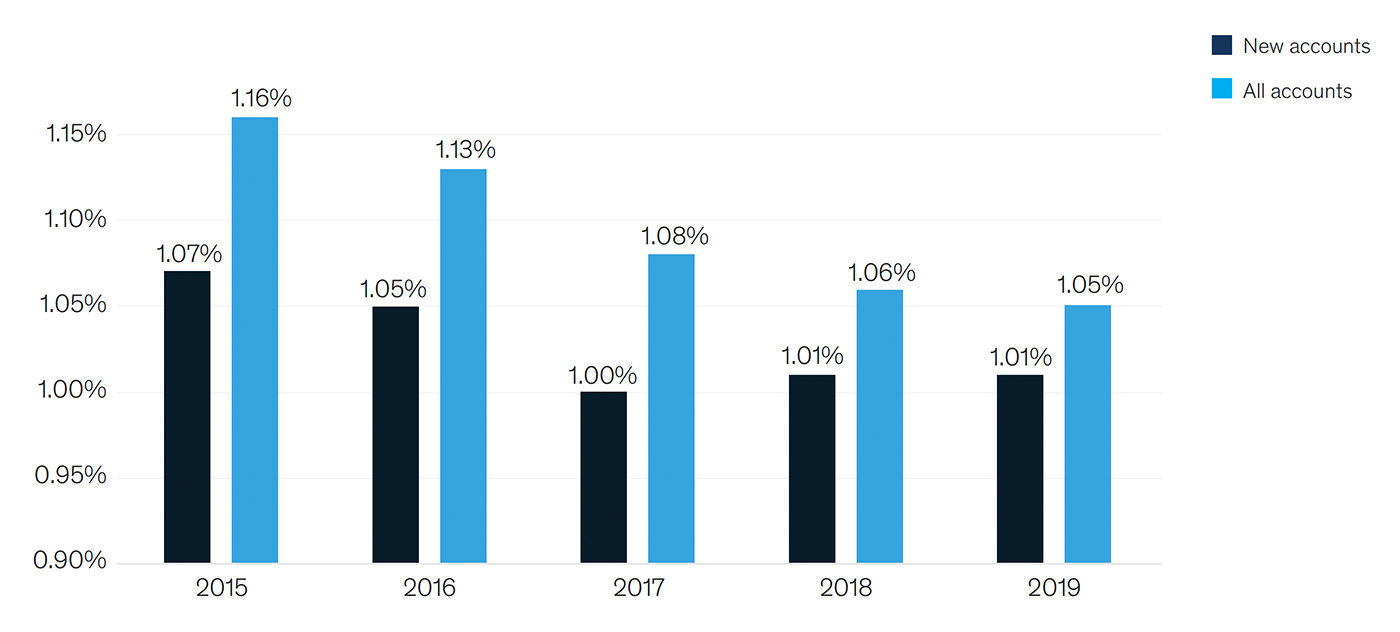The state of retail wealth management: 2020 trends and opportunities for 2021
The state of retail wealth management: 2020 trends and opportunities for 2021

Research findings from the 2020 PriceMetrix study, “The State of North American Retail Wealth Management,” identify key trends, “lessons learned,” and potential success factors for financial advisors.
PriceMetrix, a data and analytics company that is a division of McKinsey & Company, publishes a comprehensive and insightful analysis each year of the retail wealth-management landscape. Their proprietary database includes information collected from more than 25 wealth-management firms in North America, with information from approximately 65,000 financial advisors.
In the introduction to the 2020 report, which was authored as COVID-19 gripped countries around the globe, PriceMetrix states,
“As the COVID-19 pandemic plays out, the human tragedy is clear, but the end-state impact on populations, governments, and financial markets remains unknown. …
“The positive news is that advisors entered this difficult period from a position of strength. A prolonged period of growth followed the last bear market, as advisors reached record levels of assets and revenues in 2019. Over the course of the last decade, many advisors changed how they work with clients. With digital entrants and lower-cost service offerings challenging the value of portfolio construction and monitoring, advisors responded by recentering their propositions on more comprehensive planning for more complex clients.
“They’ve also transformed how they get paid, with more than two-thirds of revenues coming from asset-based fees, compared to one-third just ten years ago. Relationships are deeper, client retention rates have peaked [as of the end of 2019], and advisors are more resilient than ever.”
PriceMetrix says that the challenges created by the pandemic remain significant and will continue to test the relationships between advisors and their clients. However, it believes advisors are well-positioned to “bring strength, stability, and perspective to their clients when they need it most.”
The report presents several major findings, summarized below.
PriceMetrix says that the growth of assets under management and revenues for advisors was—beyond the acquisition of new clients—primarily a function of appreciating asset prices in the lengthy market uptrend over the past several years, as well as the fee-based revenues associated with that growth.
Two chief questions will be answered as final numbers for 2020 become available in the next few months: Will advisor revenues decline due to various factors associated with the pandemic? Will client attrition increase?
FIGURE 1: ADVISOR ASSETS UNDER MANAGEMENT AND REVENUES HAVE SHOWN
IMPRESSIVE GROWTH

Source: PriceMetrix
At the time of the research report’s publication, final figures for 2020 were not yet available. While U.S. equity markets rose in 2020, it will be interesting to see if the volatility throughout the year (and the Q1 market decline) will have a significant impact on the trends seen over the past five years.

Source: PriceMetrix
In 2019, says PriceMetrix, “advisors opened 7.5 new client relationships, the same number they opened in 2016 [Figure 3].” This has stayed very stable over the 2015–2019 period.
The economic, financial, and health-care challenges of 2020 may impact last year’s performance on this measure, says PriceMetrix. Clients whose portfolios underperformed during volatile markets are more likely to consider switching advisors. The report states, “Past PriceMetrix studies have shown that clients are more likely to switch advisors during a market downturn. In 2009, 10 percent of clients left their advisor, the highest level of the last 12 years.”

Source: PriceMetrix
One of the key findings of this study lies in the value of advisors expanding their relationships with clients. This is defined in terms of median number of accounts placed with an advisor and especially the inclusion of a retirement account. PriceMetrix says,
“In recent years, many advisors have prioritized relationship quality over quantity, choosing to serve fewer affluent clients more comprehensively. Even after adjusting for market performance, average client size has increased by 13 percent from 2015 to 2019.
“With a preference to serve clients more holistically (rather than serve clients who may be spreading their assets across different advice providers), advisors are benefiting from deeper relationships. Accounts per household continue to climb, up to 3.1 in 2019 compared to 2.7 in 2015. And the percentage of households with retirement accounts has also increased from 65 percent to 72 percent in that same time.”
TABLE 1: TOP ADVISORS (CLIENT RETENTION) HAVE DEEPER AND FEWER
CLIENT RELATIONSHIPS

Source: PriceMetrix
“Wealth management pricing has seen steep declines over recent years, tempering revenue growth driven by market performance. In 2019, we saw a second consecutive year of stability [Figure 4], particularly on new fee accounts. …
“History suggests that bear markets can be a particularly challenging time for some advisors with respect to pricing. During and following the 2008 financial crisis, PriceMetrix observed that 17 percent of advisors increased their level of discounting (priced lower), and while their price levels increased after the recovery, they stabilized at a rate halfway between pre-crisis levels and the bottom of their pricing (that is, they only recovered half of what they gave up). …
“What’s different 12 years later is that significantly more revenues are earned in the form of asset-based fees than they were in 2008 (69 percent compared to 38 percent). Therefore, as markets retreat, so will the income of advisors. While fee-based accounts have several benefits, one drawback is that in a period where advisors will likely be providing a lot more in terms of service (research, communication, guidance) they will actually be paid less.”
FIGURE 4: FEE RATES FOR HOUSEHOLDS WITH MANAGED ASSETS OF $1 MILLION TO
$1.5 MILLION

Source: PriceMetrix
PriceMetrix offers the following broad conclusions related to lessons seen in the last financial crisis—and the actions financial advisors should likely be considering as financial markets remain uncertain and the pandemic likely still has many months to go:
- “The 2008 financial crisis tested advisor-client relationships. Advisors saw client attrition spike to 10 percent in the first full year following the market decline. In the decade that’s followed, the core value proposition of the financial advisor has come of age. Stock advice and trading evolved into portfolio design and execution, and now seems more deeply rooted in holistic wealth planning and coaching. Client relationships (net of market performance) are larger, relationships are deeper, and advisors are more likely to be the primary financial advice provider for the clients they work with. As a result of all these changes, client attrition rates fell to an all-time low of 5 percent in 2019.
- “There is likely to be a higher rate of client attrition in the year ahead, and advisors who are passive and reluctant to step up and serve their clients will see disproportionately more clients leave. … The demands placed on advisors to ingest, process, and deliver relevant information to their clients will be extreme. The stress level of clients, particularly those past retirement age, will be justifiably elevated. And for the majority of advisors who earn revenue in the form of asset-driven fees, they will be providing more service and more value, while earning less themselves.
- “There will also be opportunities for growth. Clients have demonstrated more willingness to switch advisors and channels in the face of adversity, and advisors who are proactive in this next cycle can create opportunities to serve more clients, deepen existing relationships, and demographically diversify their client base. As firms do prioritize investments in digital servicing tools, the adoption by clients and advisors may be greatly accelerated. And there has never been a more important time for firms to ensure that their compensation plans are designed and calibrated to reward advisor growth and client engagement.
- “Long-term growth will be anchored on the solid foundation that advisors have already built within their practices. Nothing will pay more dividends to advisors in the long run than deeply servicing their existing clients, being their trusted advisor, and helping guide them through the months ahead. Financial advice has never been more important.
- “To adapt and succeed over the next several months, wealth managers will face a new set of questions:
- How have the needs of my clients changed, and what have I done to change and meet those needs?
- Are there things I should stop doing?
- Are there ways to extend my services to others whose needs are not being met by their current advisors?
- As both my clients and I become more comfortable interacting digitally, should I make permanent changes to my service model? Perhaps expand my offering to serve clients in other jurisdictions?
- With market performance enticing younger investors into the capital markets, am I doing enough to manage the demographics of my business through marketing, segmentation, and service delivery?”
Editor’s note: Proactive Advisor Magazine wishes to thank PriceMetrix and McKinsey & Company for permission to republish the key findings of “The State of North American Retail Wealth Management—9th Annual PriceMetrix Report.” Specific thanks go to several PriceMetrix team members: Kieran Bol (head of client analytics), Patrick Kennedy (senior solution leader and associate partner), and Dmitry Tolstinev (data analyst). Advisor and wealth-management firm data is reported as of Dec. 31, 2019, while analysis and conclusions were developed during 2020.
 David Wismer is editor of Proactive Advisor Magazine. Mr. Wismer has deep experience in the communications field and content/editorial development. He has worked across many financial-services categories, including asset management, banking, insurance, financial media, exchange-traded products, and wealth management.
David Wismer is editor of Proactive Advisor Magazine. Mr. Wismer has deep experience in the communications field and content/editorial development. He has worked across many financial-services categories, including asset management, banking, insurance, financial media, exchange-traded products, and wealth management.
